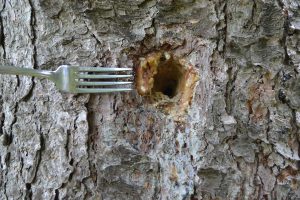This summer, I took the longest sustained pause since completing my PhD. I knew I needed a break, but my time kept getting eroded. I decided a year ago to safeguard this summer to recharge, and also to focus on my non-academic writing. With caring for aging parents, and then launching right into the PhD, life had been taking priority over the creative work for more than a decade. Six manuscripts had been parked that I wanted to get back to. I brought three with me on retreat, knowing that my writing focus tends to change with the weather.
It rained six days out of seven quite consistently, sometimes with violent wind, thunder and lightning; so while not a good summer for painting and outdoor cottage repairs, it proved very productive in terms of one of my writing projects. A poetry manuscript that I’ve been working on for a while, but hadn’t figured out how to bring together, is now nearing completion. And it feels so good! It’s like taking back a vital part of my self that’s been lying fallow for far too long. It’s not that I haven’t been writing, but I find that academic writing just doesn’t allow for the same level of free-thinking creativity; it just doesn’t offer the same buzz. And for me, creative work requires quality time that also supports the energy required.
I took my writing retreat at the family cottage, a log cabin in the woods on a lake north of Peterborough. I was there for nearly six weeks, which proved to be an optimal amount of time. It was long enough to get good work done, but by the end, I was ready to come home. I also got some fun reading done; I caught up on almost a year’s worth of National Geographic, and read five novels, four of them YA fare. I knitted most of a sweater, noting my long association of writing with knitting. And in spite of the weather, I got out on the lake in my kayak several times.
Sitting on the front lawn, you can see and hear all kinds of birds: ospreys, blue jays, chickadees, scarlet tanagers, hummingbirds, herons, loons, ducks, geese, wild turkeys, crows (few things in nature sound as goofy as an adolescent crow), and woodpeckers. The woods are also full of animals: black and red squirrels, chipmunks, racoons, porcupines, groundhogs, fox, and deer. It’s amazing to see them in the wild, but they tend to disappear on weekends when more people are around and the lake gets noisy.
It’s quiet there. So quiet, that I sleep heavily through the night. So quiet, that you can hear insects, and when a Phoebe snatches one from the air, you can hear her beak snapping shut. The air sometimes has sweet undertones. Sunsets provide amazing light shows, and then the night is truly dark and still.
I feel well rested, relaxed, and more like myself than I have for a really long time. As with all holidays, one tries to hang onto that feeling for as long as possible. I’m back in Toronto, with the teaching term starting, but I’ve scheduled regular writing time, hoping to move forward with some other projects that’ve been on hold. I’ll let you know when I get a publisher lined up!
©Catherine Jenkins 2017 all rights reserved


